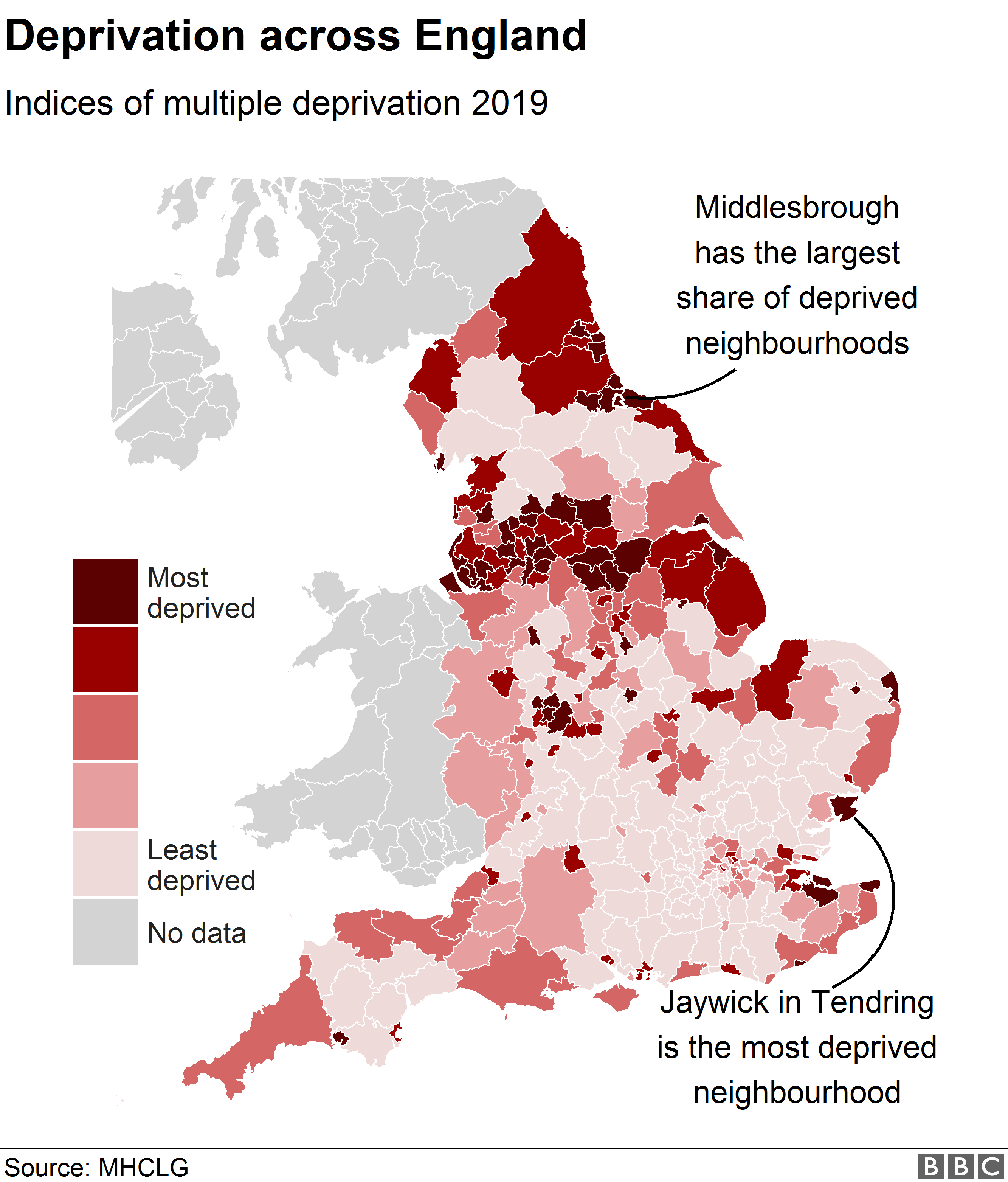In September 2019 we reported on the first release in four years of the Indices of Deprivation.
The data, released by the Ministry of Housing, Communities and Local Government (MHCLG), looks at levels of income, employment, education, health and crime as well as housing services and living environment in 32,844 neighbourhoods.
Knowing that the data was going to be released, we were able to prepare an R script that would combine it with previous releases and perform the analyses that we wanted on the day, as well as conduct interviews in advance of the day.
- Dan Casey, Jaywick councillor (Independent)
- Andy Preston, mayor of Middlesbrough
- Spokesman, Government
- Bar chart: Proportion of neighbourhoods classed as highly deprived (top 10)
- Choropleth map: Deprivation across England
The story used R extensively to create scripts that would fetch the new data, combine it with previous data, and produce answers to particular questions:
- R notebook: fetching data, cleaning, combining and producing a top/bottom 10
- R notebook: analysing the data to identify the most deprived local authority
- R notebook: identifying areas which have changed the most on specific metrics
- R notebook: analysing how scores have changed in England from 2010-2019
We have used deprivation data before in the data unit:

